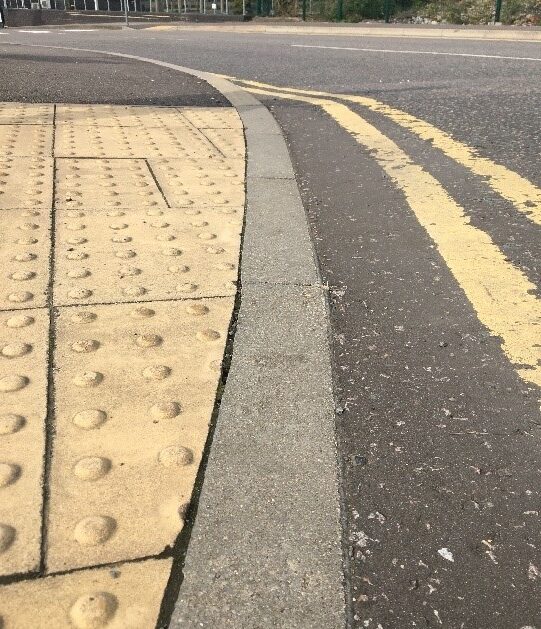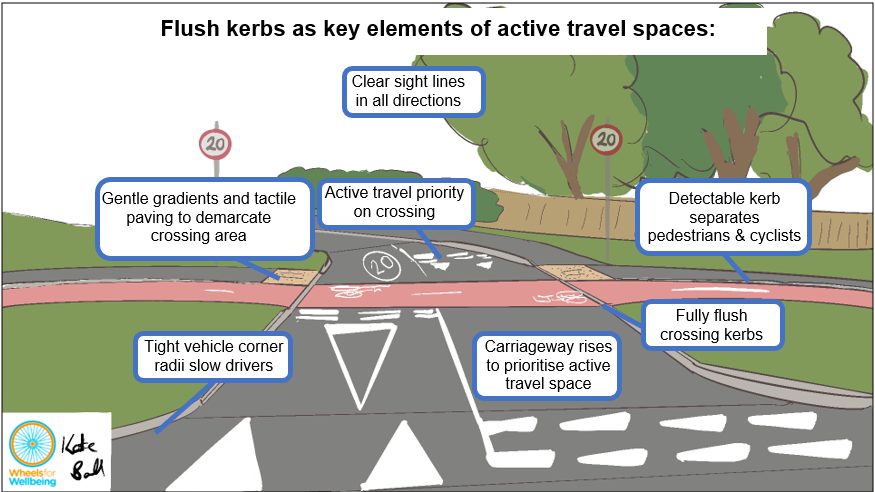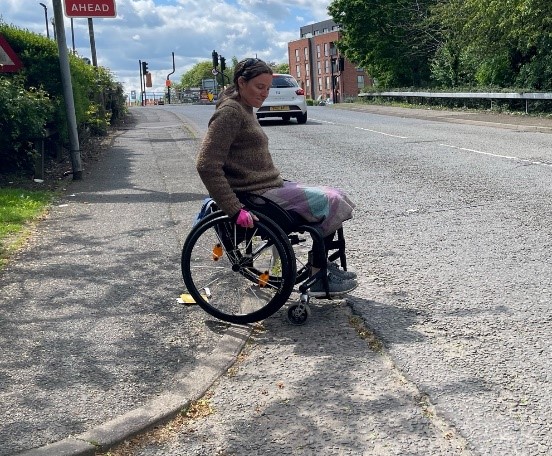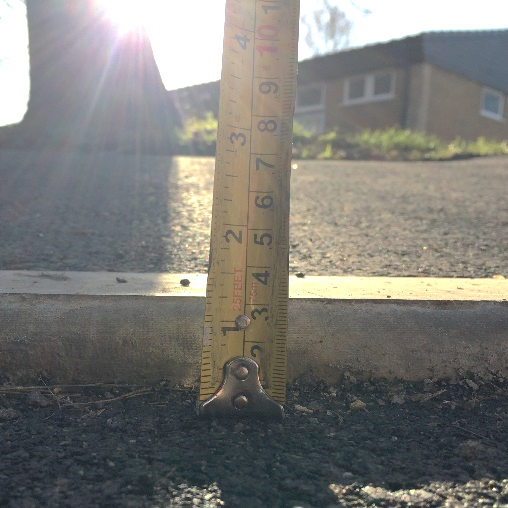Introduction
At Wheels for Wellbeing we’re releasing a series of guidance sheets for local authorities, NGOs, other organisations involved in decisions about walking, wheeling and cycling schemes and for anyone with an interest in active travel infrastructure. Hopefully, these guidance sheets will help explain the reasoning behind different aspects of accessible infrastructure design.
These guidance sheets are aligned with our Guide to Inclusive Cycling (5th edition due autumn 2023). They may be printed, electronically distributed or quoted provided credit is given to Wheels for Wellbeing.
Download the flush kerbs guidance sheet as a Word document
Download the flush kerbs guidance sheet as a pdf
Flush kerbs are an essential element of accessible public realm spaces:
- Flush kerbs are also known as dropped, cut or dipped kerbs.
- Flush kerbs are needed on all routes, including all desire lines.
- Even very small steps or bumps of 1cm or less are a trip hazard and are painful for some people.
- Minimise level changes and gradients at kerbs: Install continuous footway/cycleway unless there is a clear reason this will be unsafe.
- Minimise material changes. Consider material properties in wet/icy weather– no metal or polished stone,
- Ensure clear colour contrast between kerbs and surrounding materials.
- Design clearly segregated pedestrian and cycle routes.
Flush kerbs 1:

Fully flush kerbs with gentle gradients either side are safe and accessible for most users.

Legal and guidance position on flush kerbs:
Equality Act (2010):
These duties are anticipatory: it is a legal requirement that reasonable adjustments to make a space accessible for Disabled people must be undertaken without any Disabled person having to ask for them.
Section 20: Requires those responsible for a space to anticipate and make reasonable adjustments to enable Disabled people access with no substantial disadvantage compared to non-Disabled people. This explicitly includes including altering and removing physical features which would otherwise exclude Disabled people.
It is not permitted to require a Disabled person to go a longer way around, ask for assistance or traverse a space much more slowly than a non-Disabled person would have to due to a physical barrier that could be removed.
Section 149 Public Sector Equality Duty: Requires public authorities to advance equality of opportunity for all people with protected characteristics, including Disabled people.
This goes beyond removing and minimising disadvantages, and additionally includes taking steps to promote equality by actively enabling Disabled people to participate in public life and activities, especially where Disabled participation is disproportionately low (e.g. active travel).
Inclusive Mobility (2022):
“Dropped kerbs should preferably be flush with the road, but with a maximum 6mm tolerance if not, provided that a rounded bullnose is provided at the change of level.”
AND “…consideration should be given to the provision of dropped kerbs at least every 100 metres, where possible, to avoid the need for pedestrians, particularly wheelchair users, to make lengthy detours to cross the road.”
(also see BS8300-1:2018 fig 2)
Flush kerbs 2:

Non-flush drop kerbs and steep gradients at minor crossings can force mobility aid users into busy carriageways.

New inaccessible drop kerb on sloping road has 3cm step, 1:5 gradient onto pavement & no tactile paving.
Continuous pavement with tactiles set on gentle gradients would be much more accessible.
